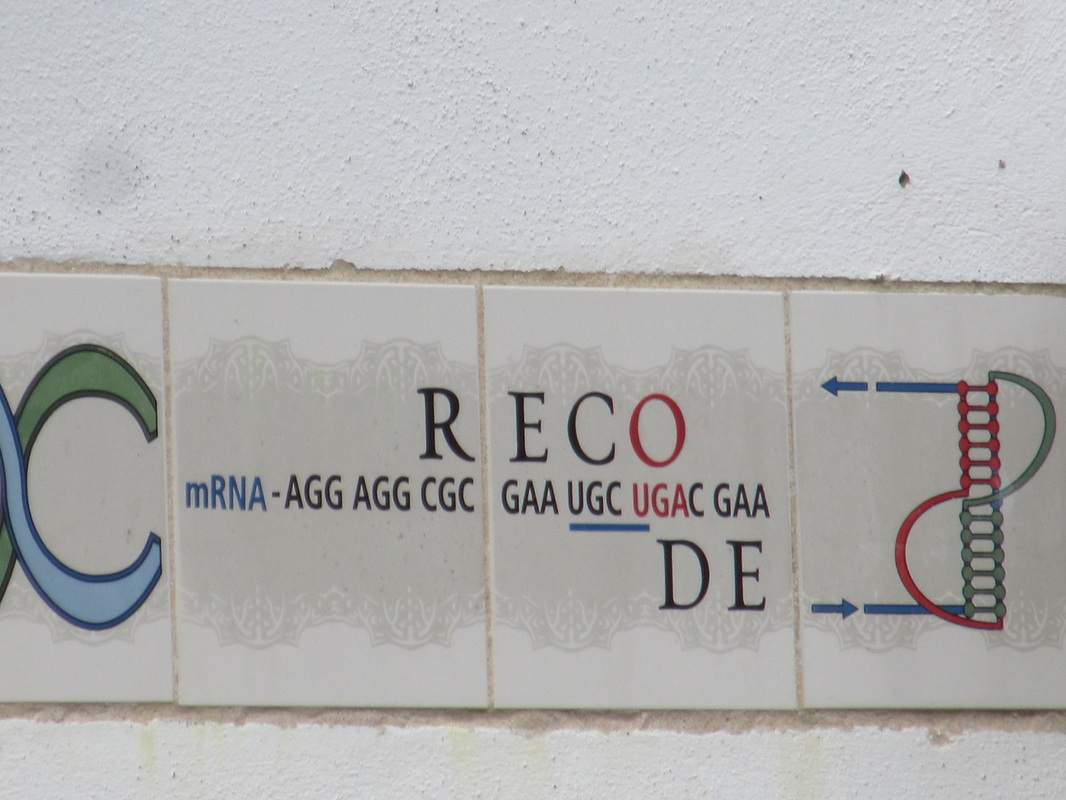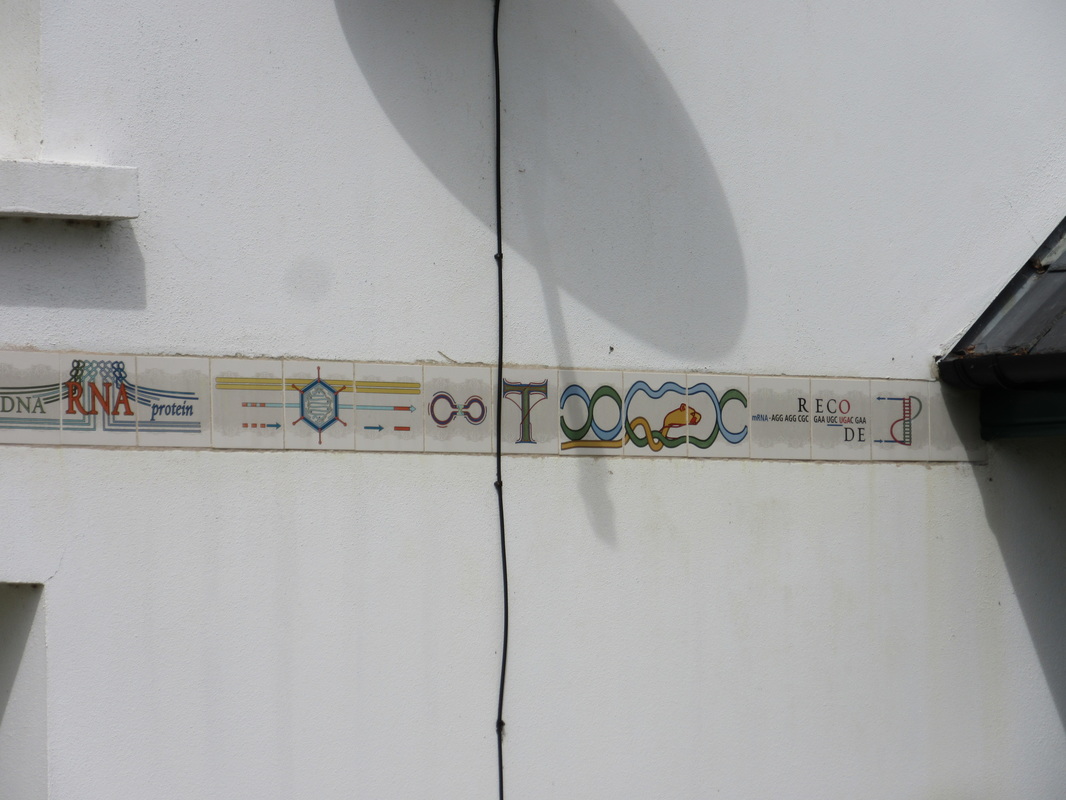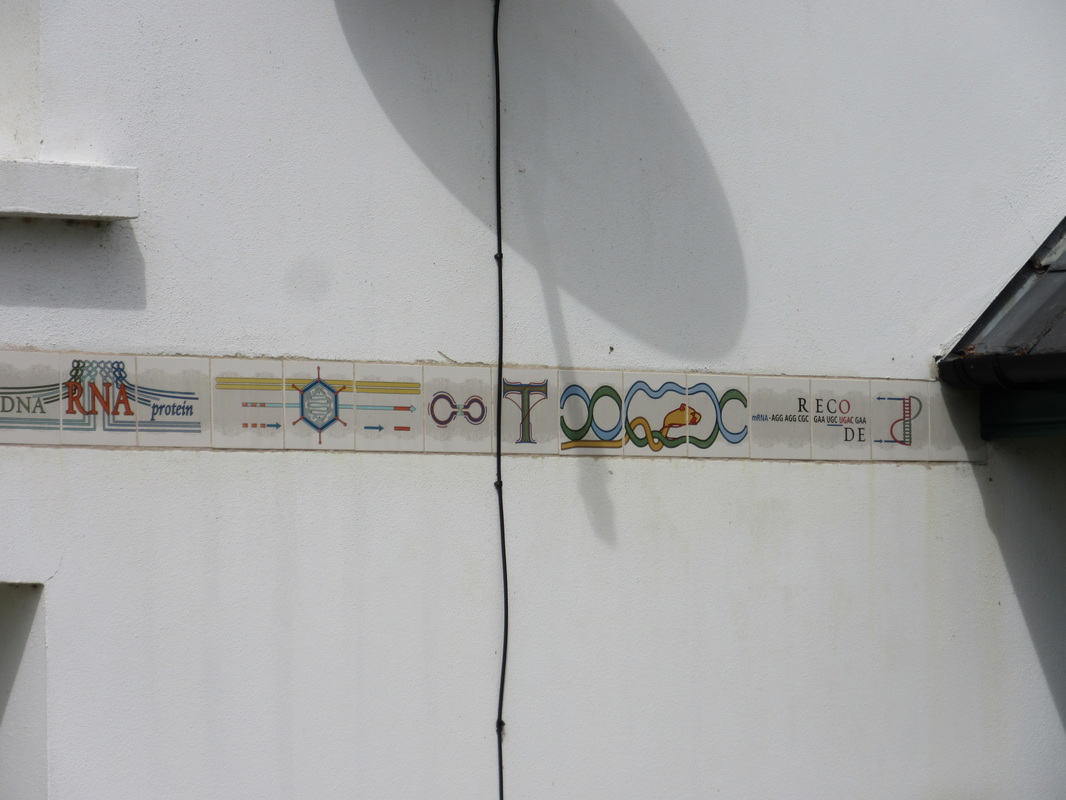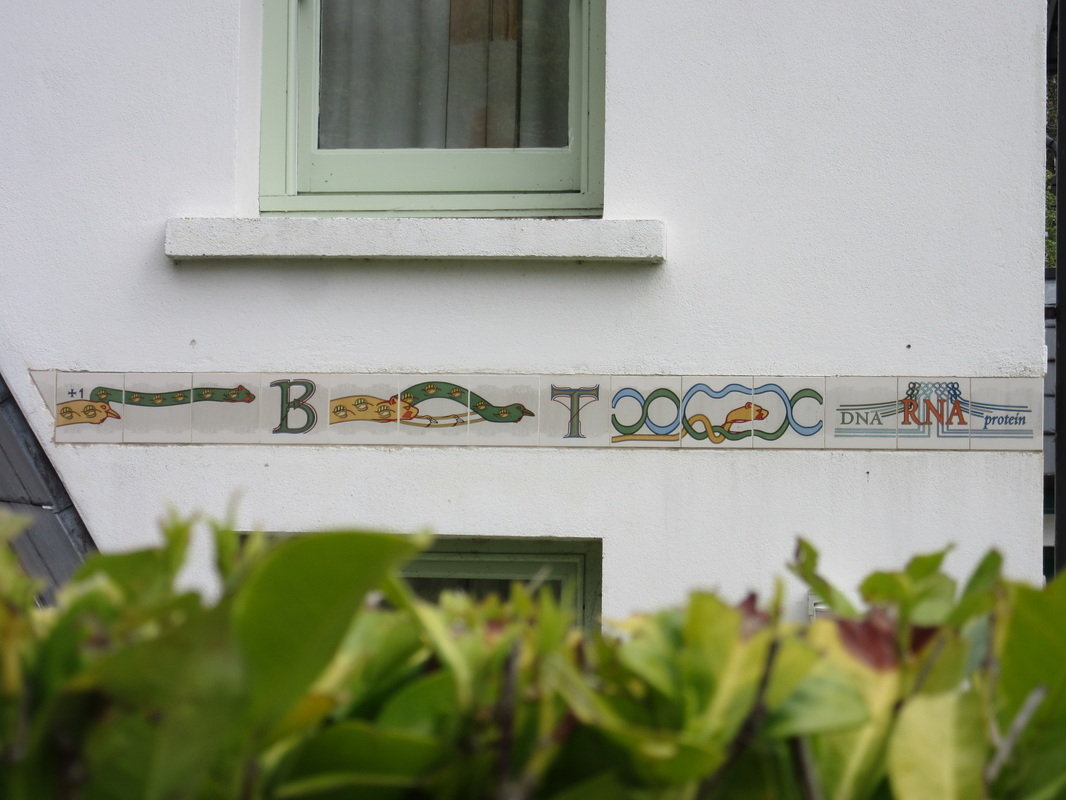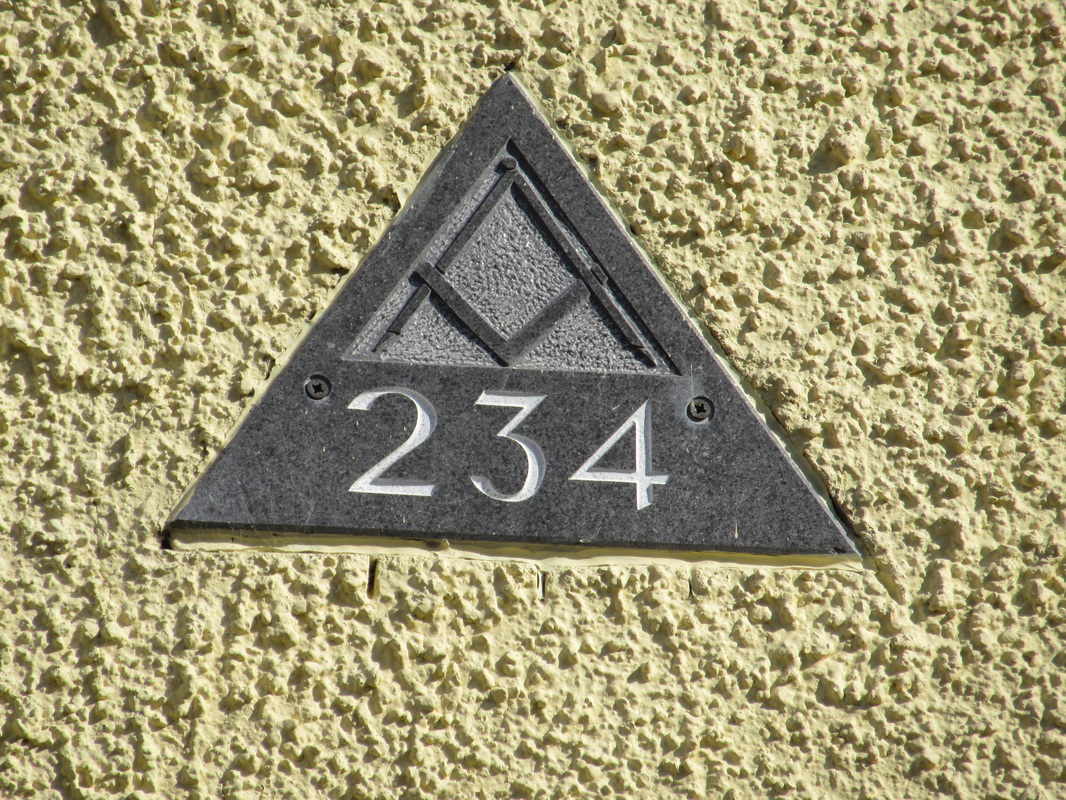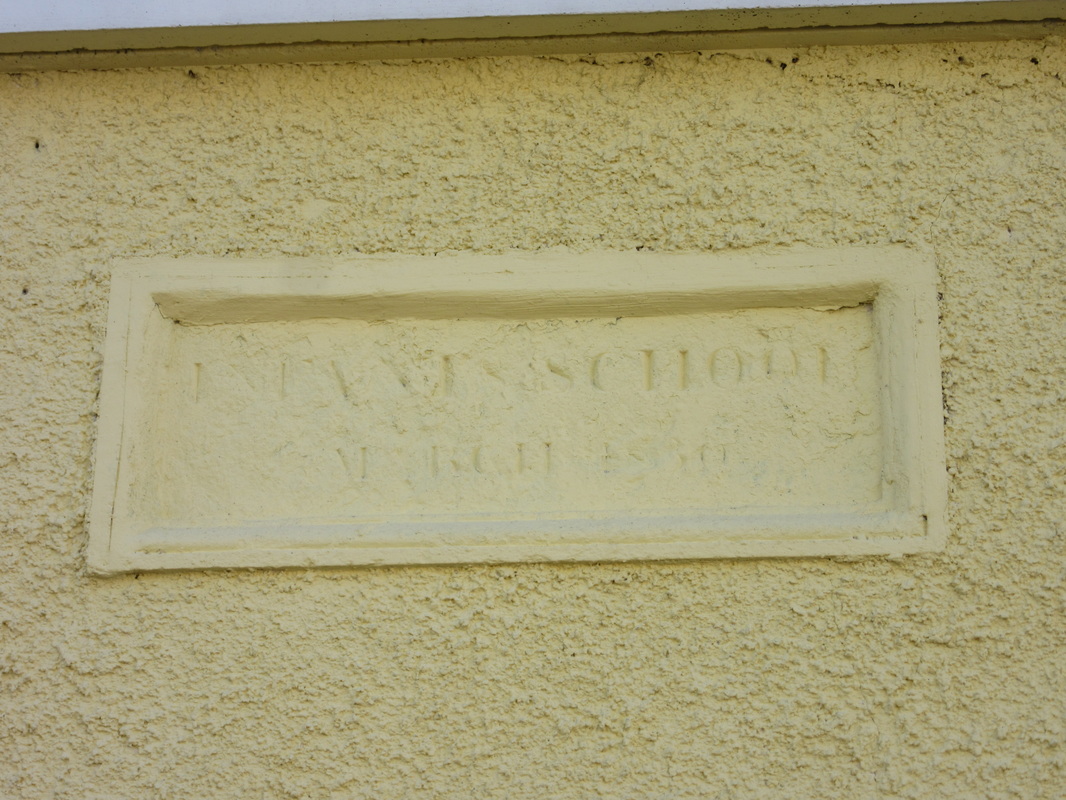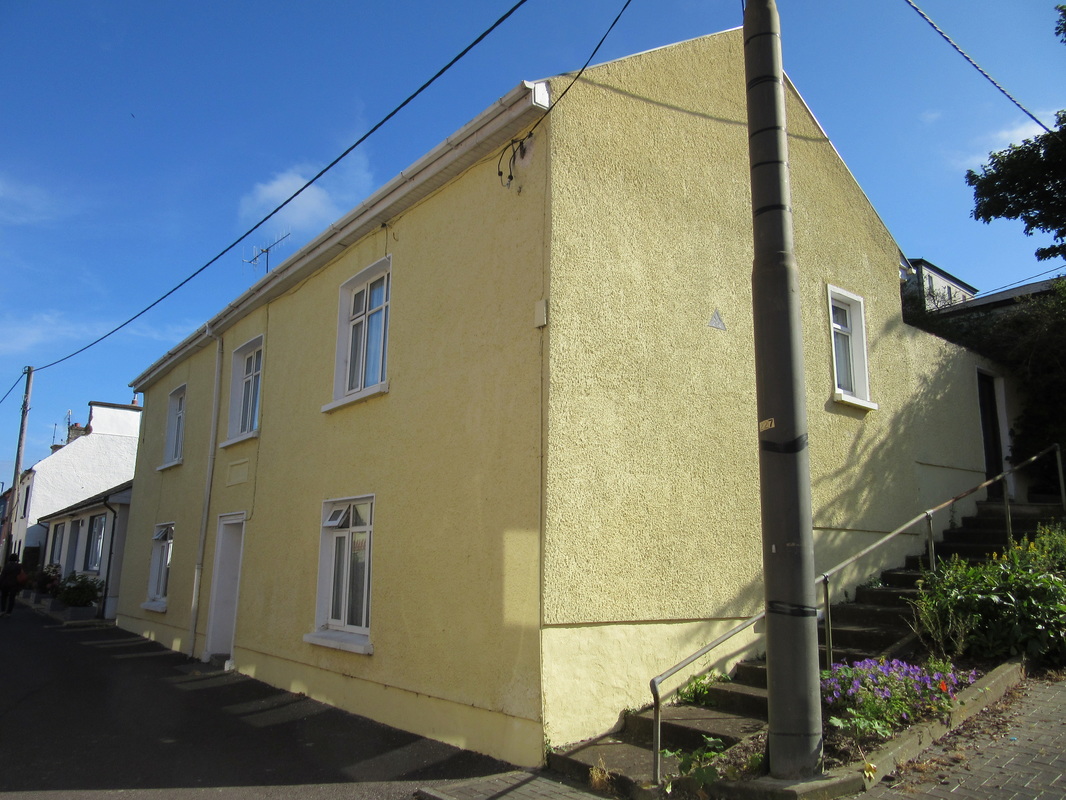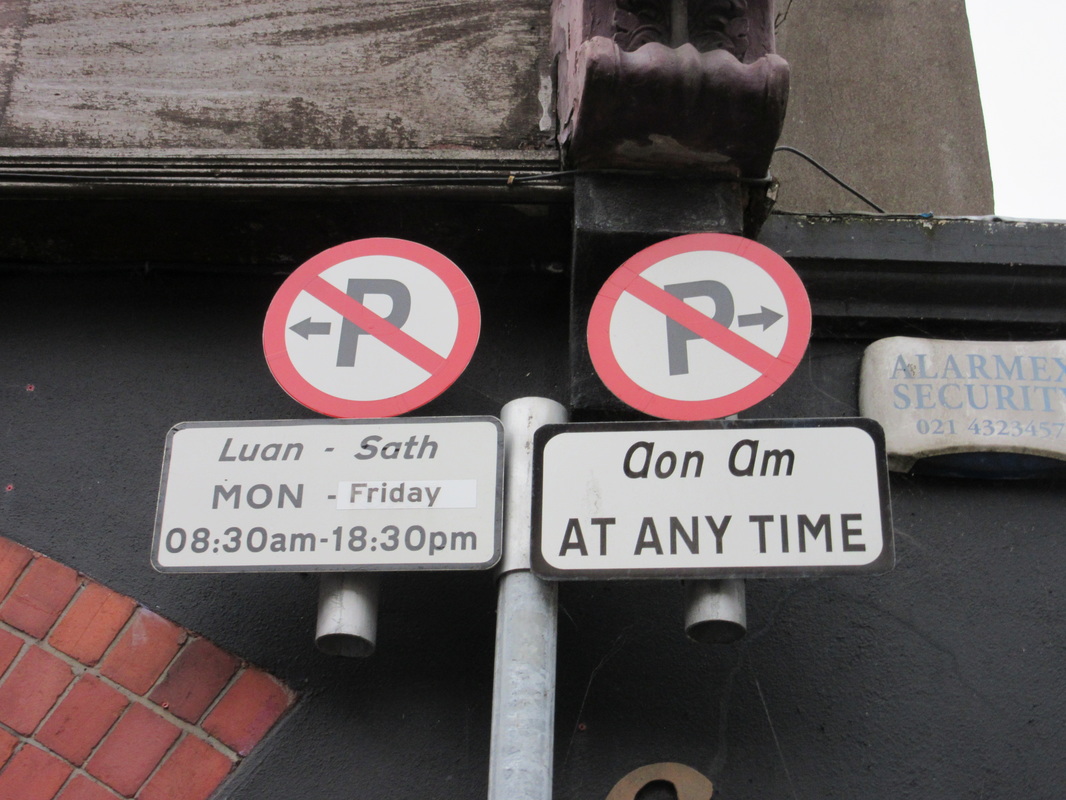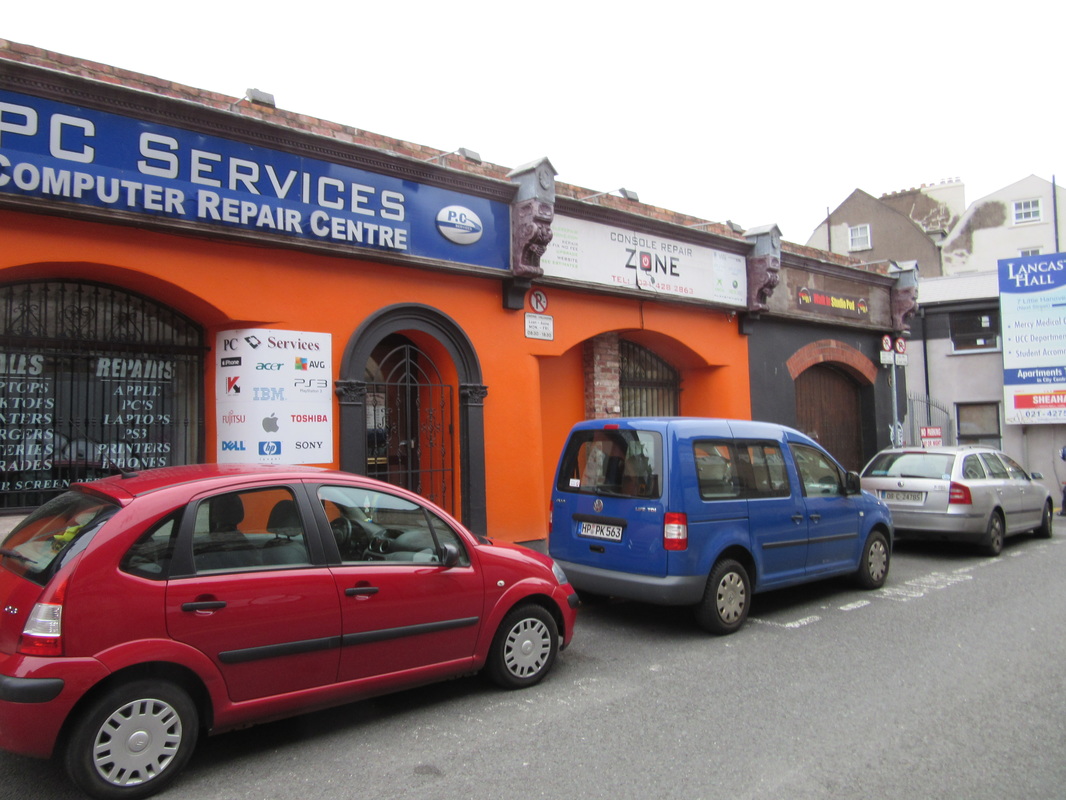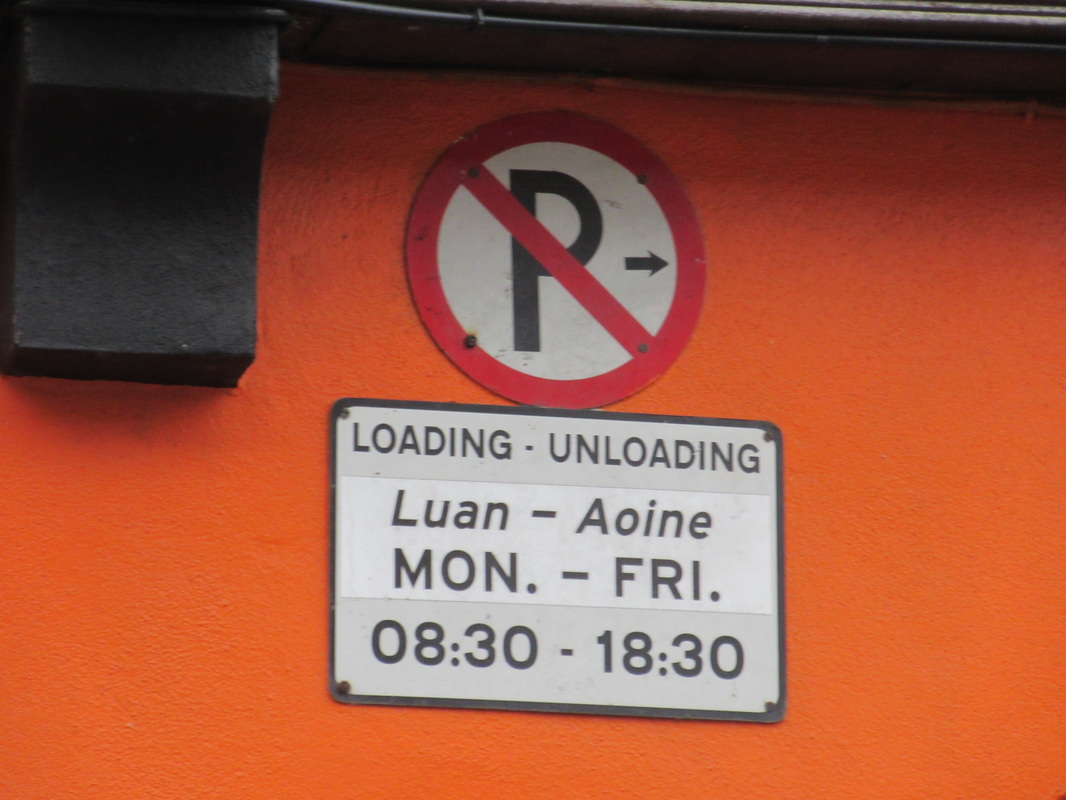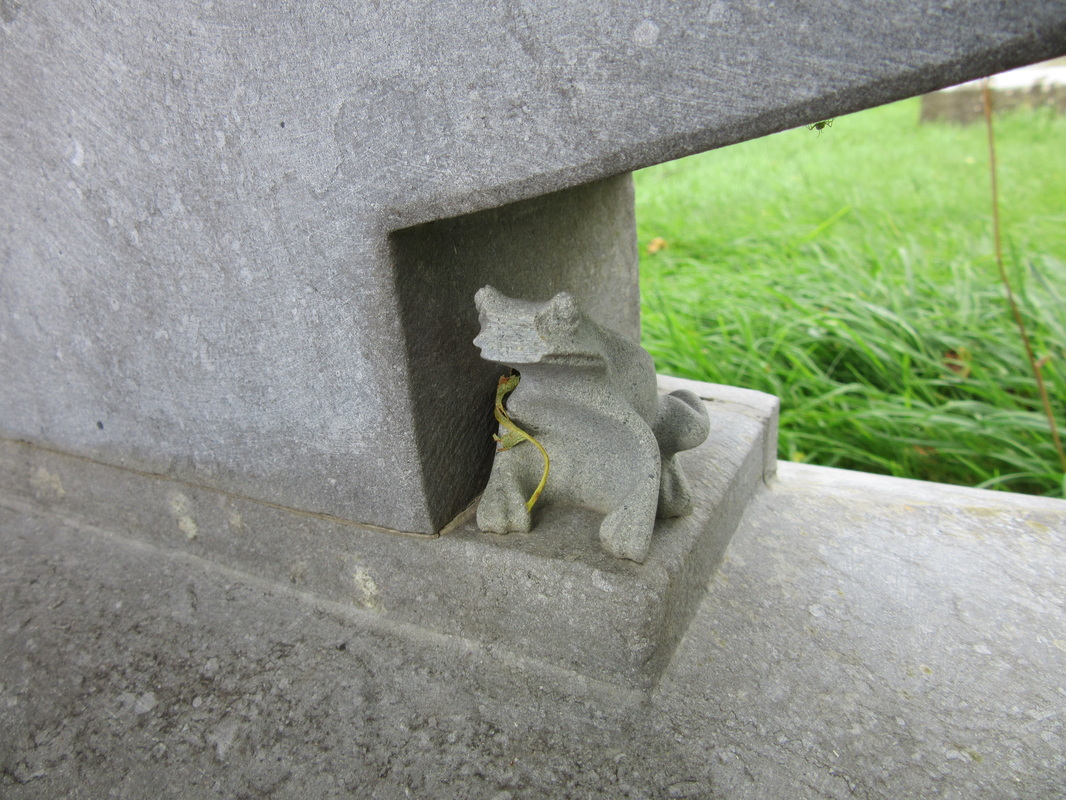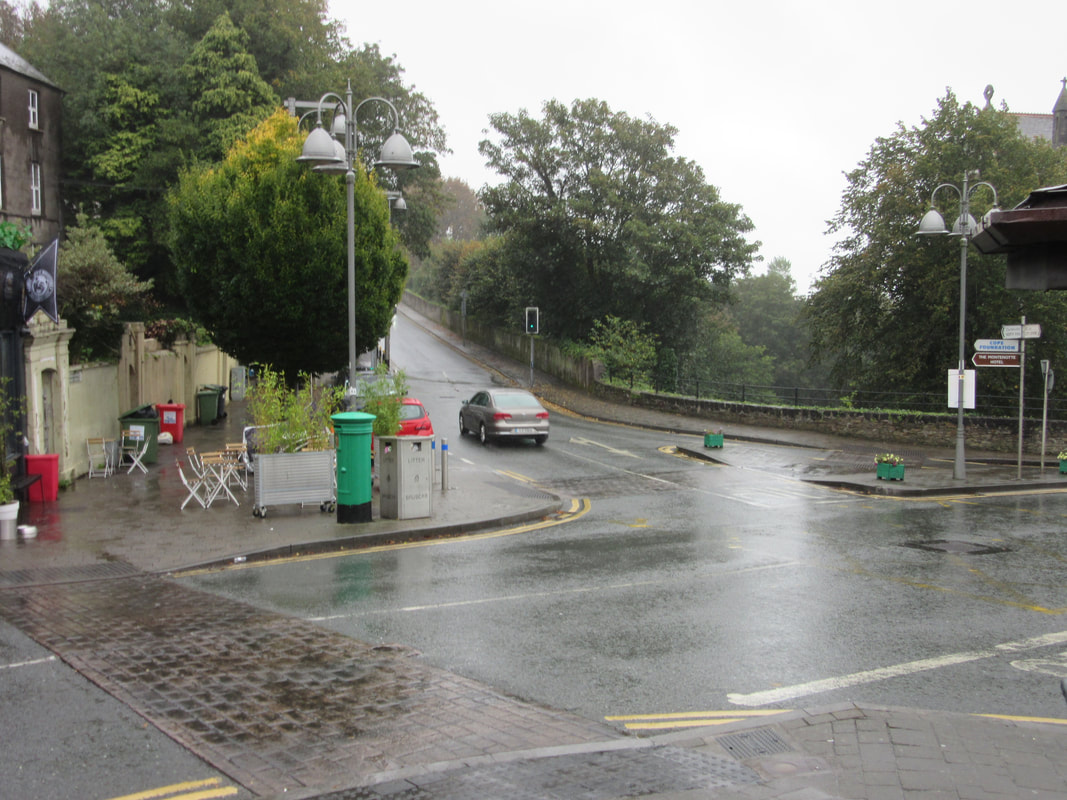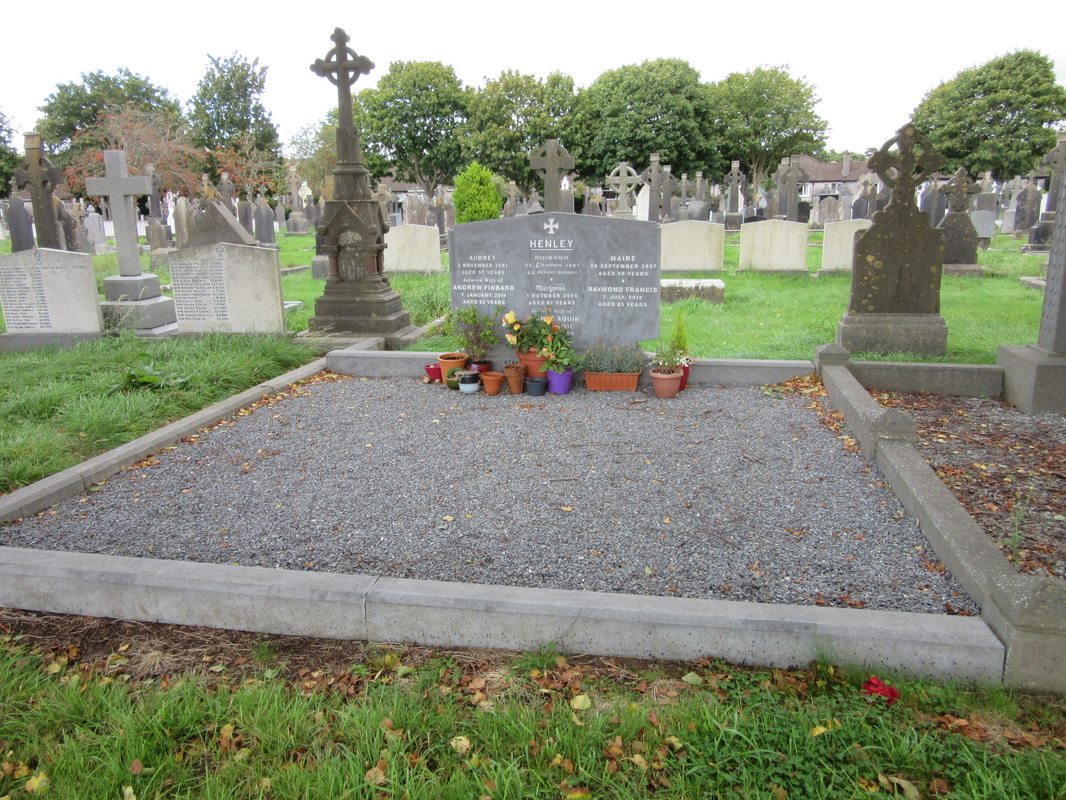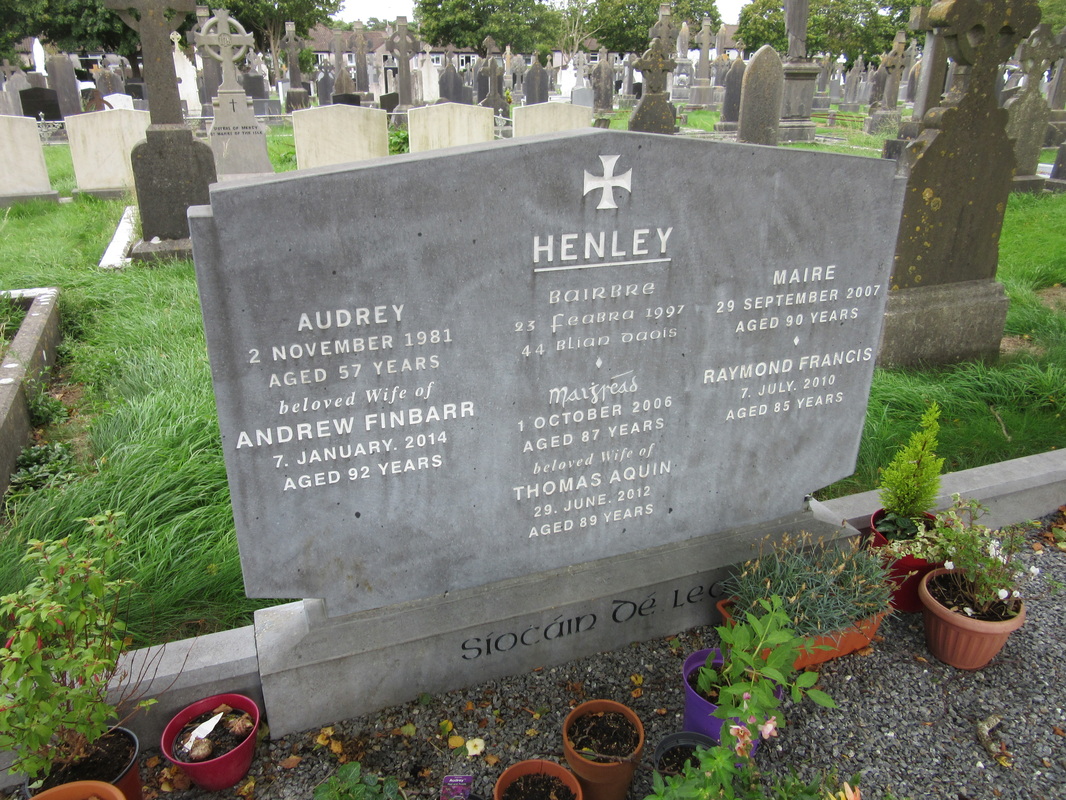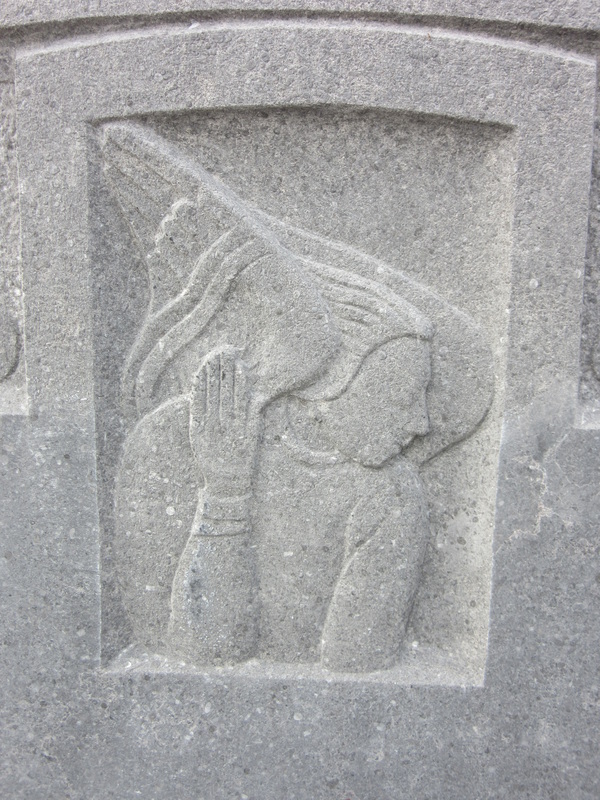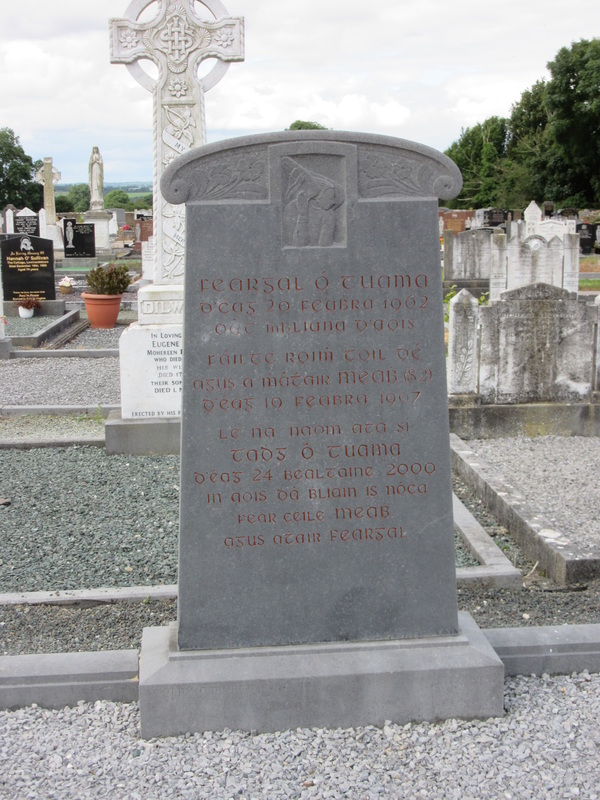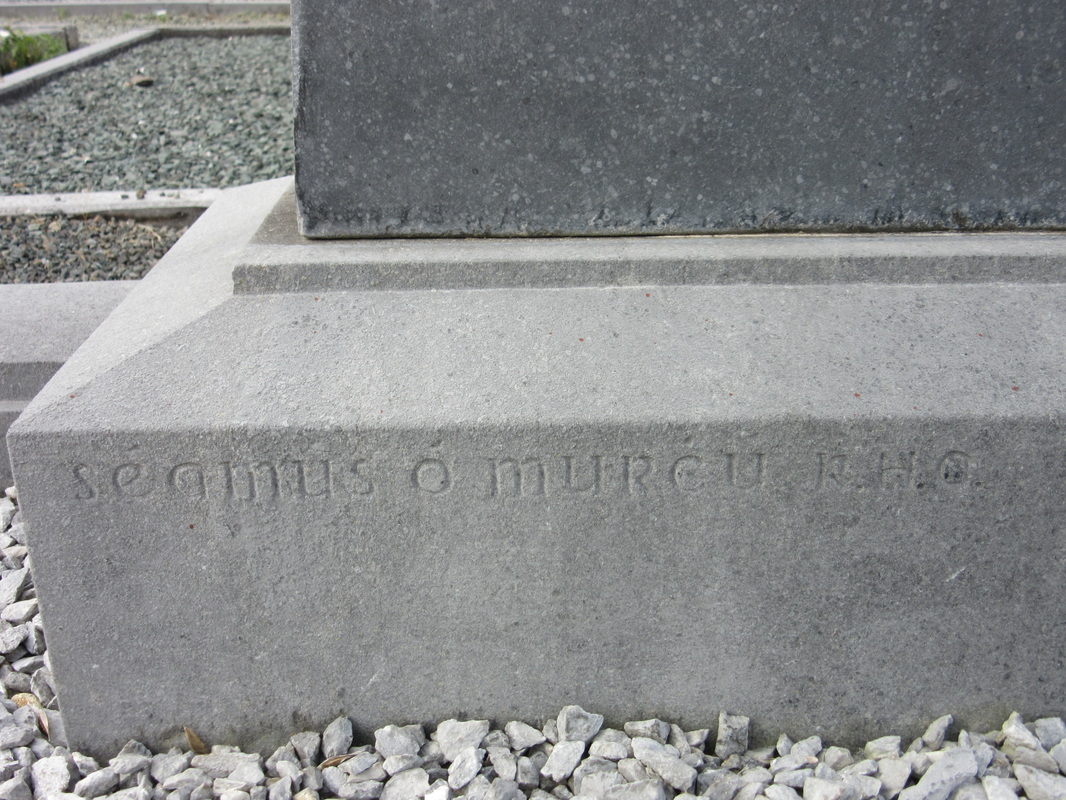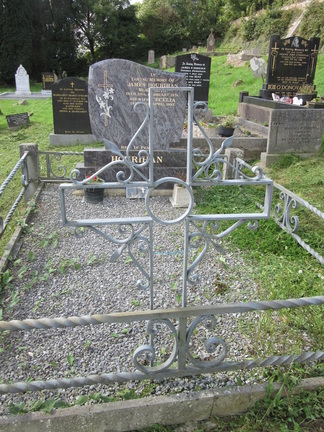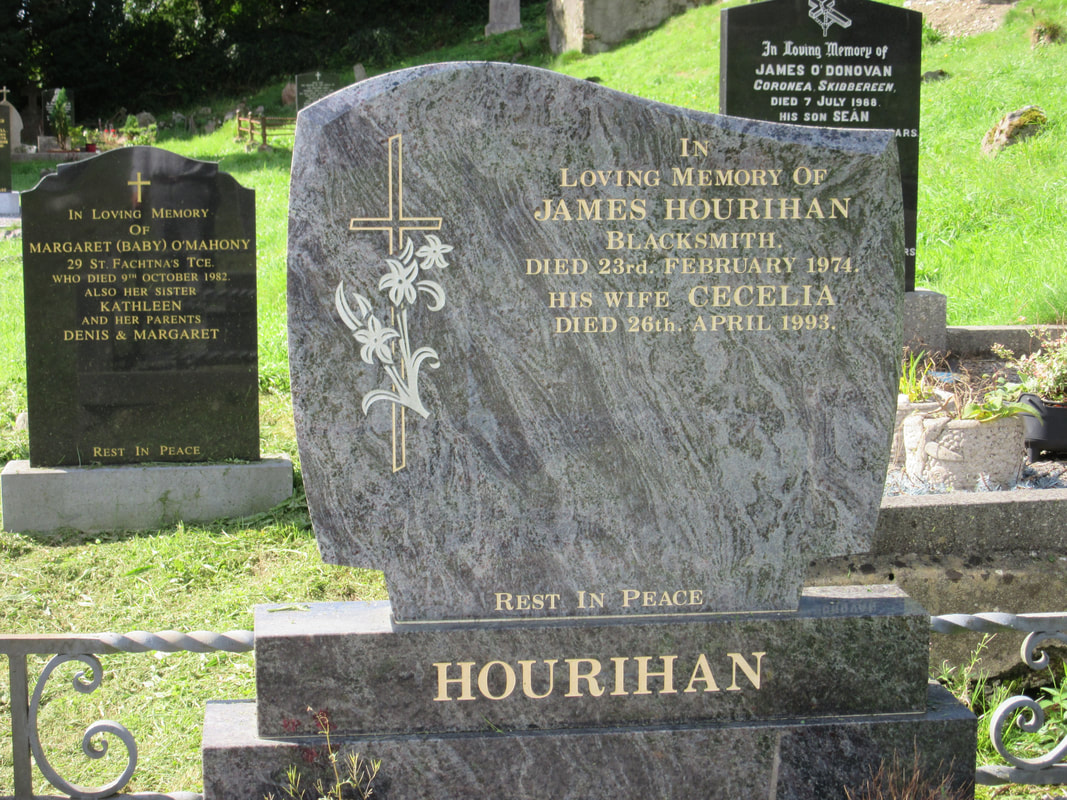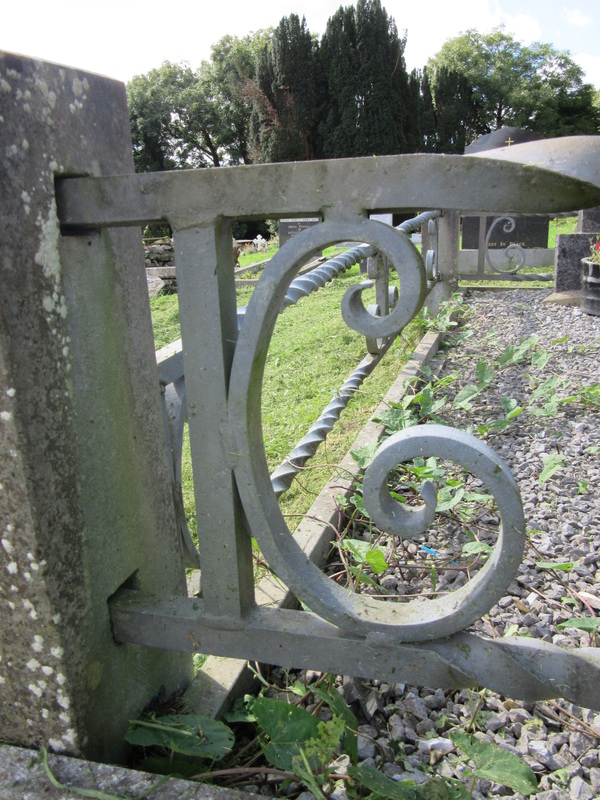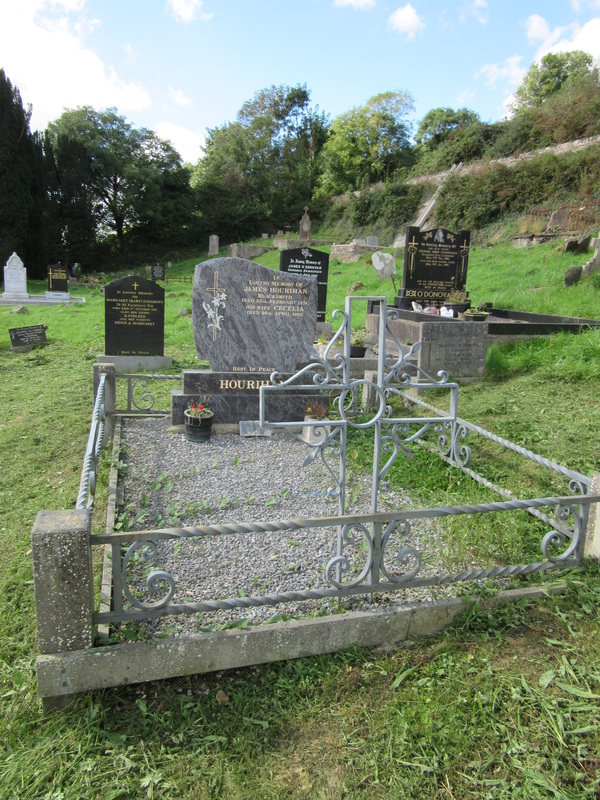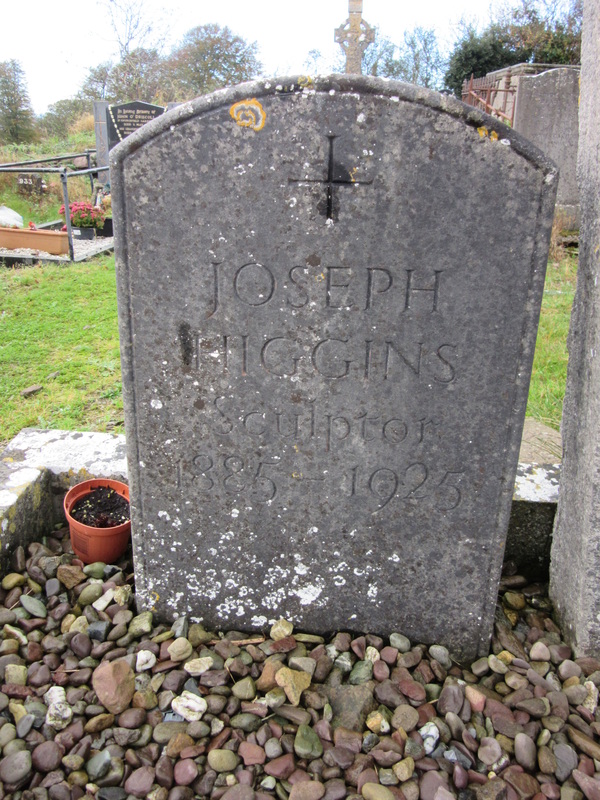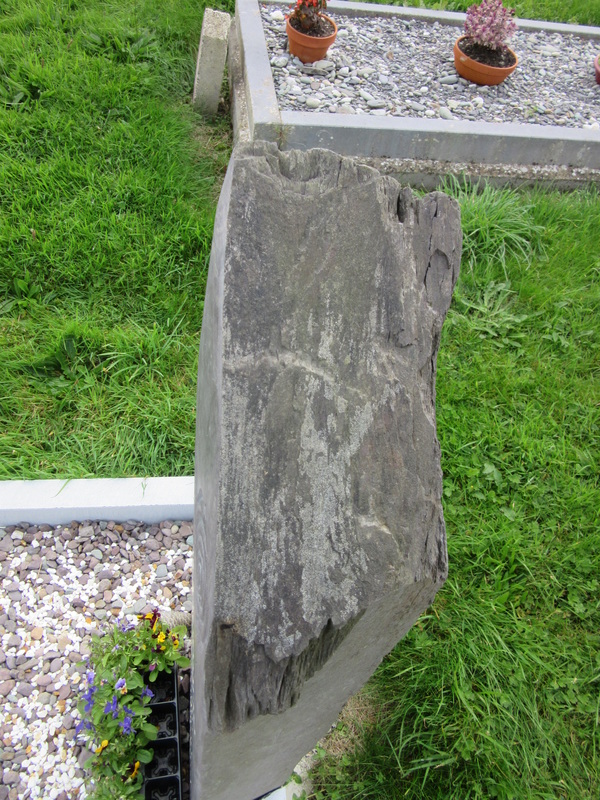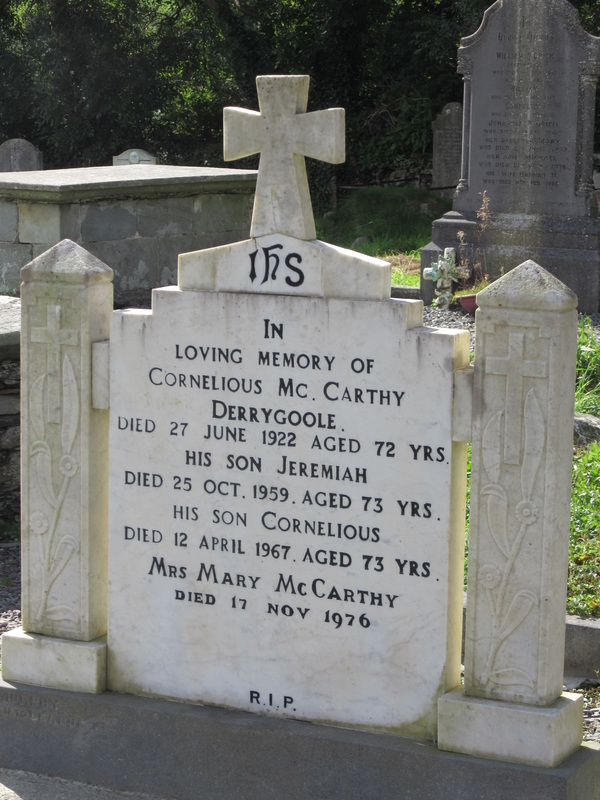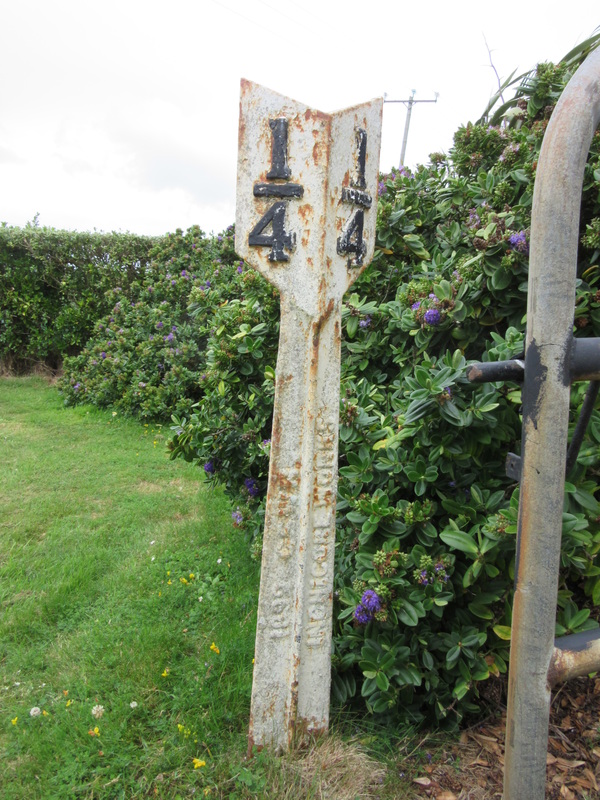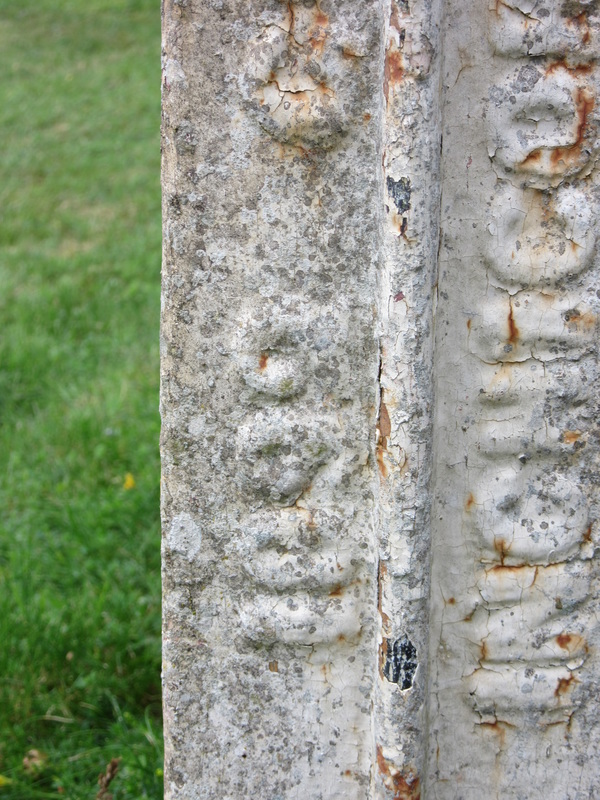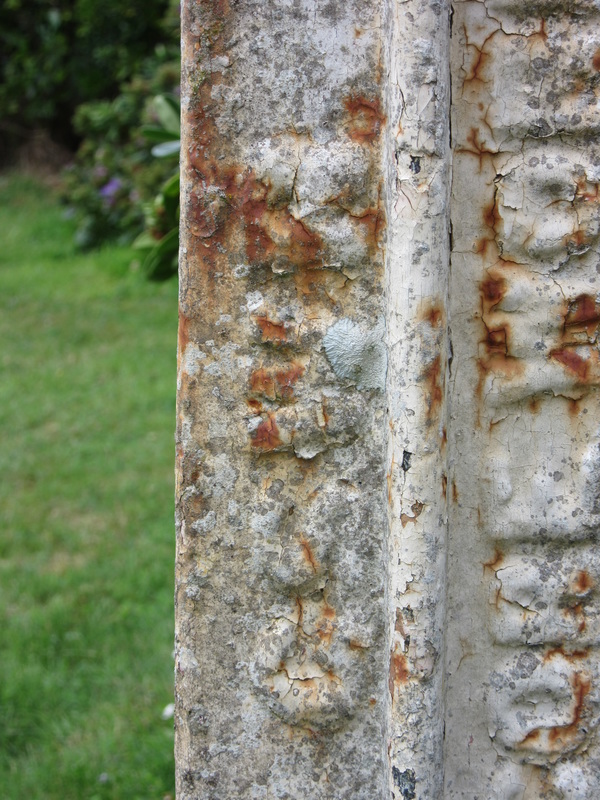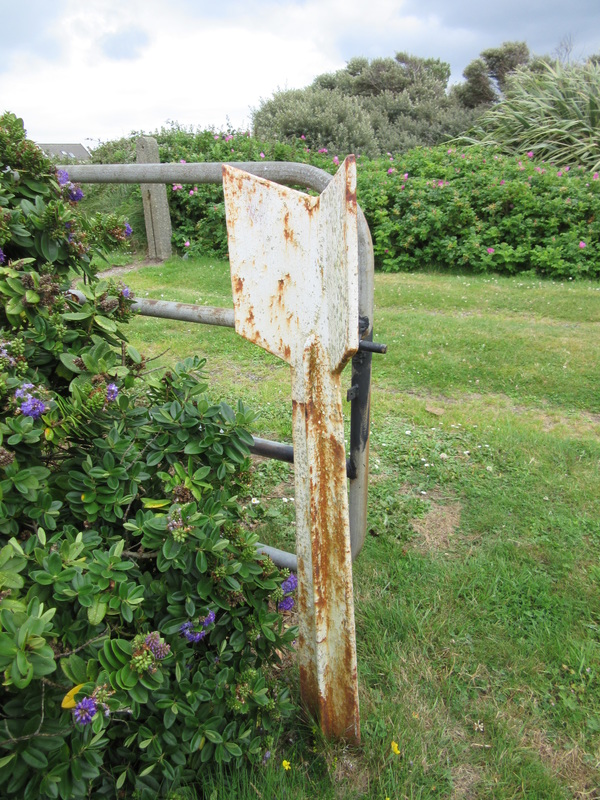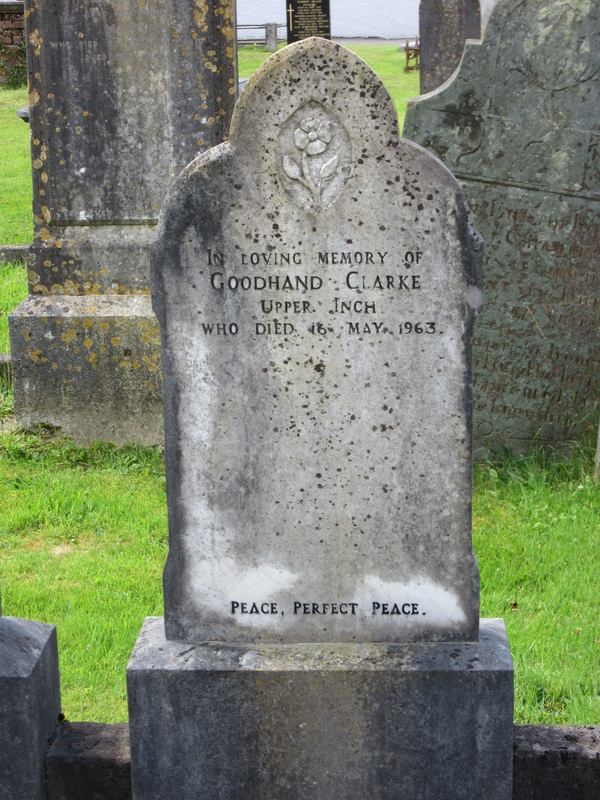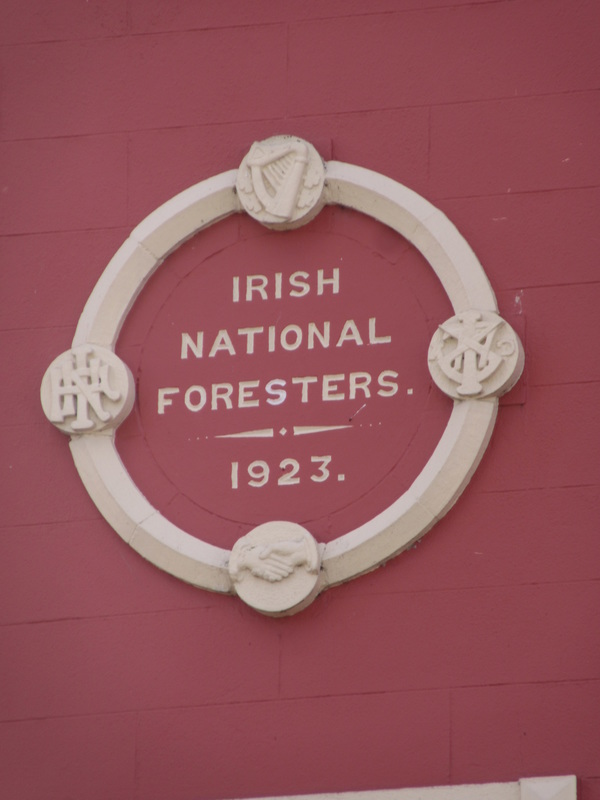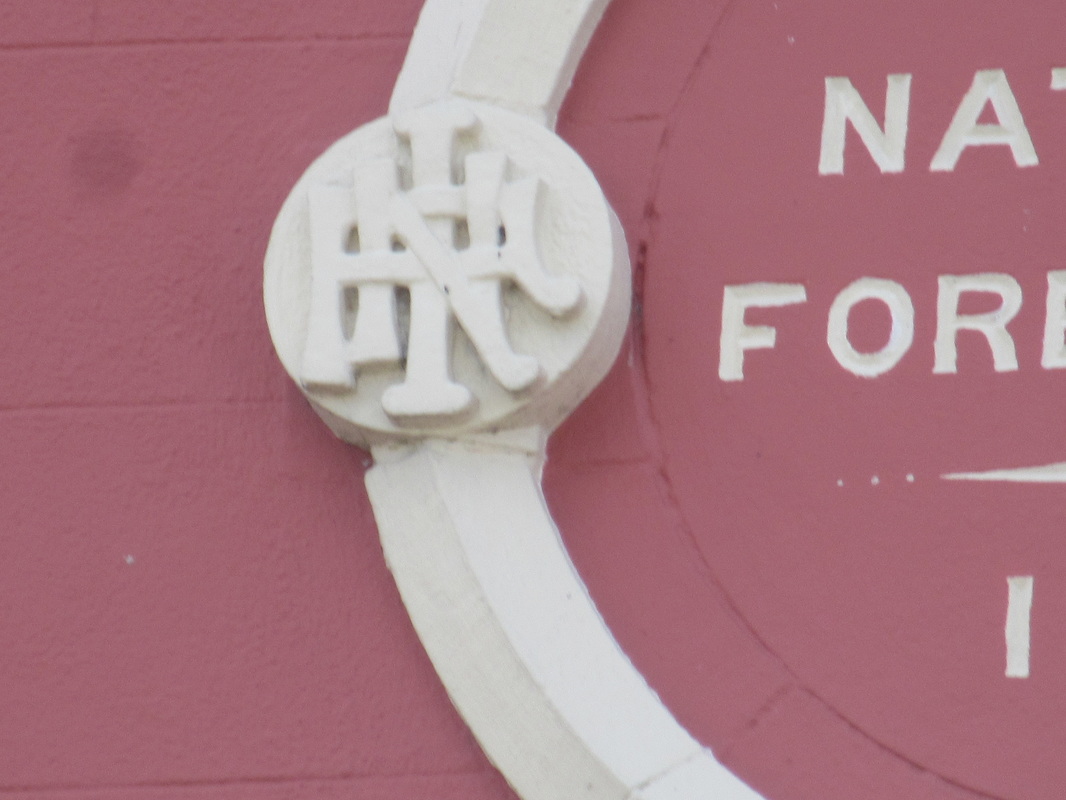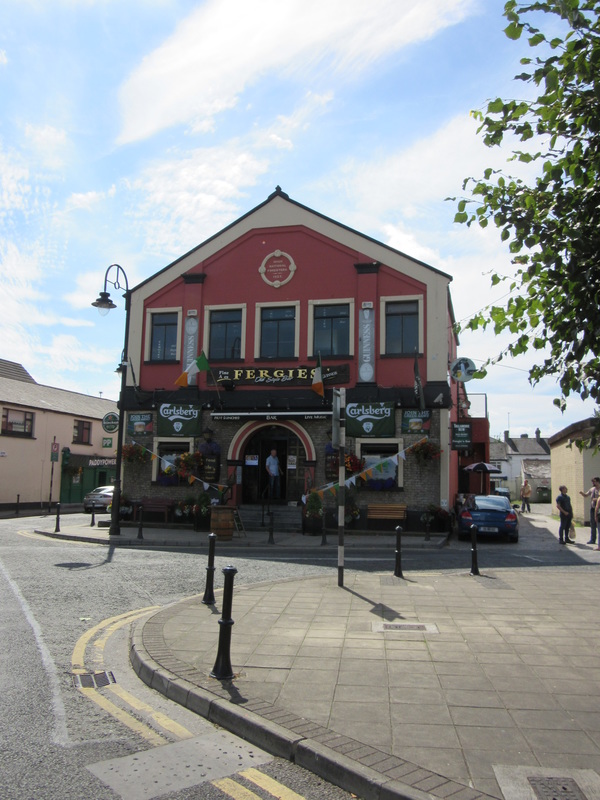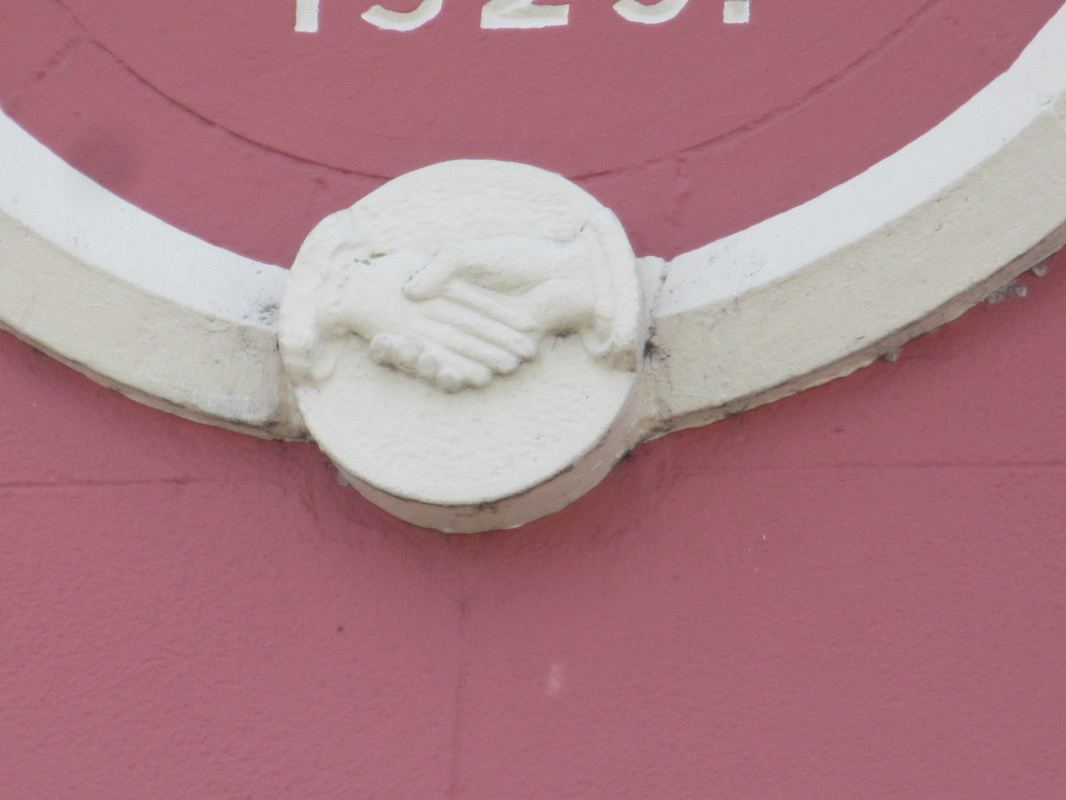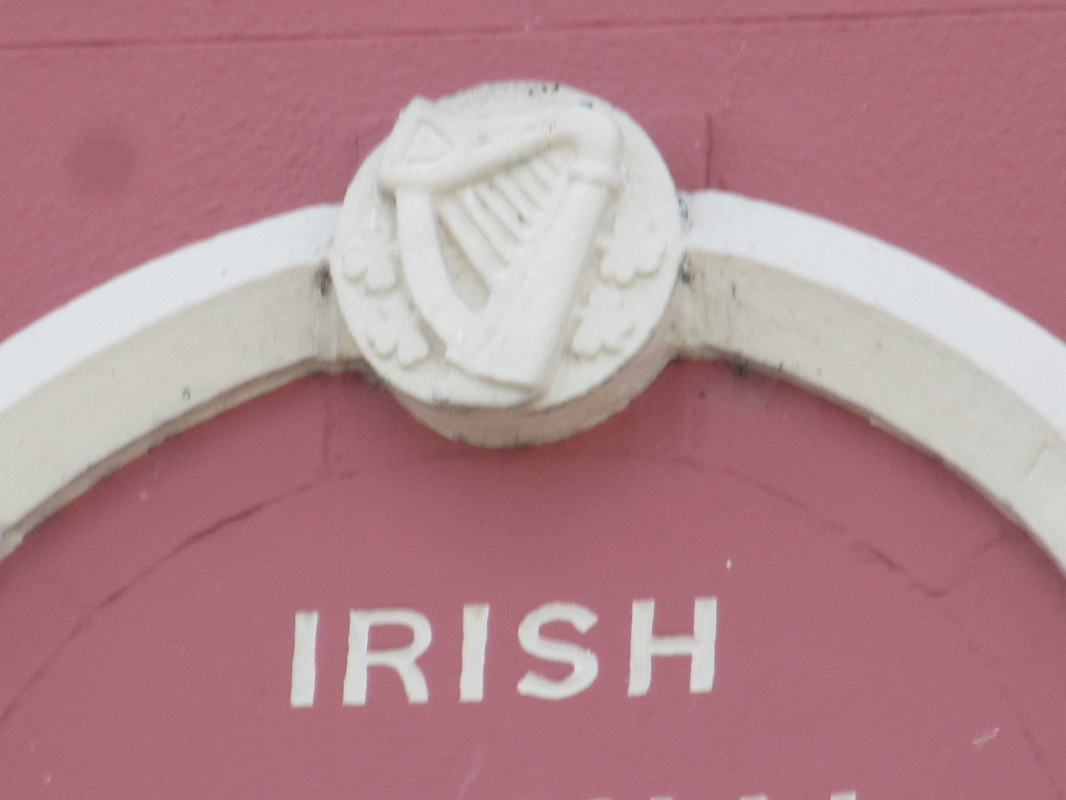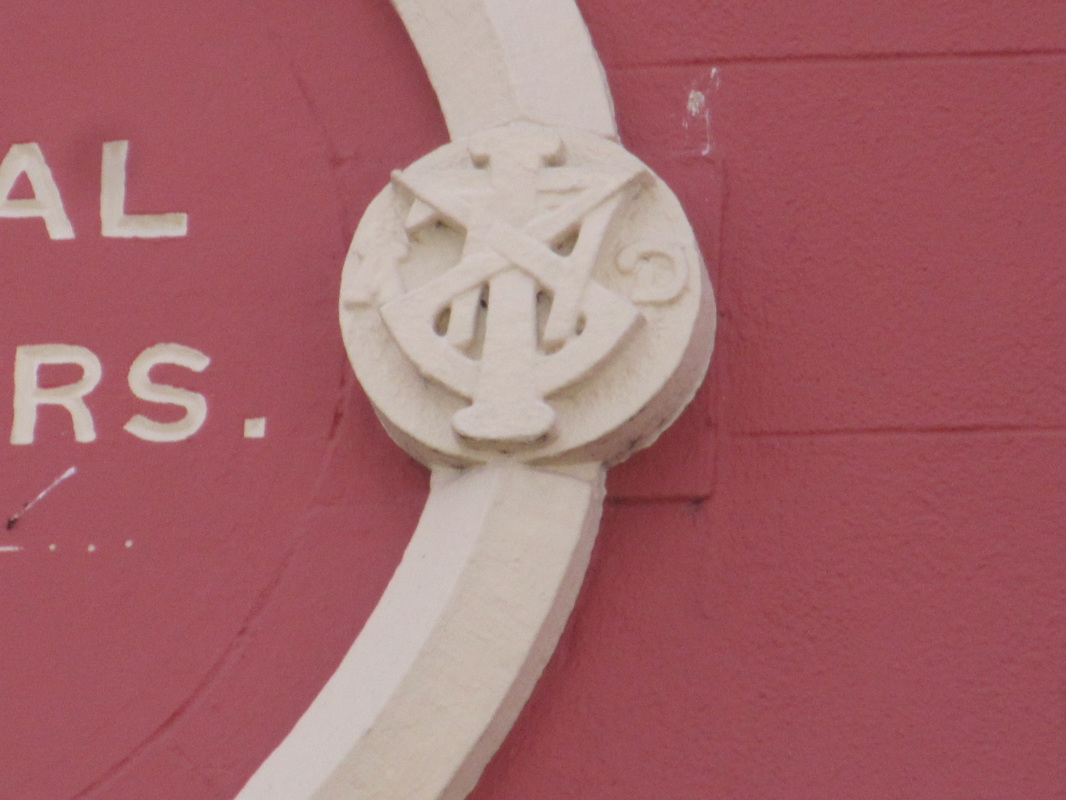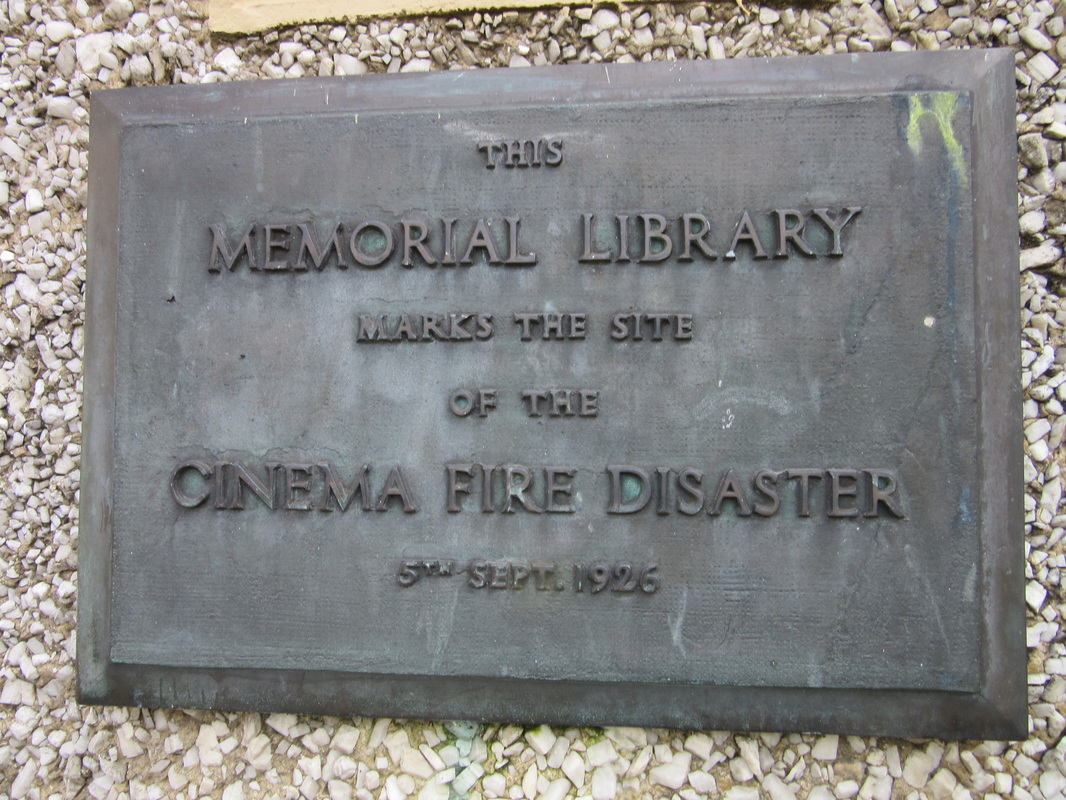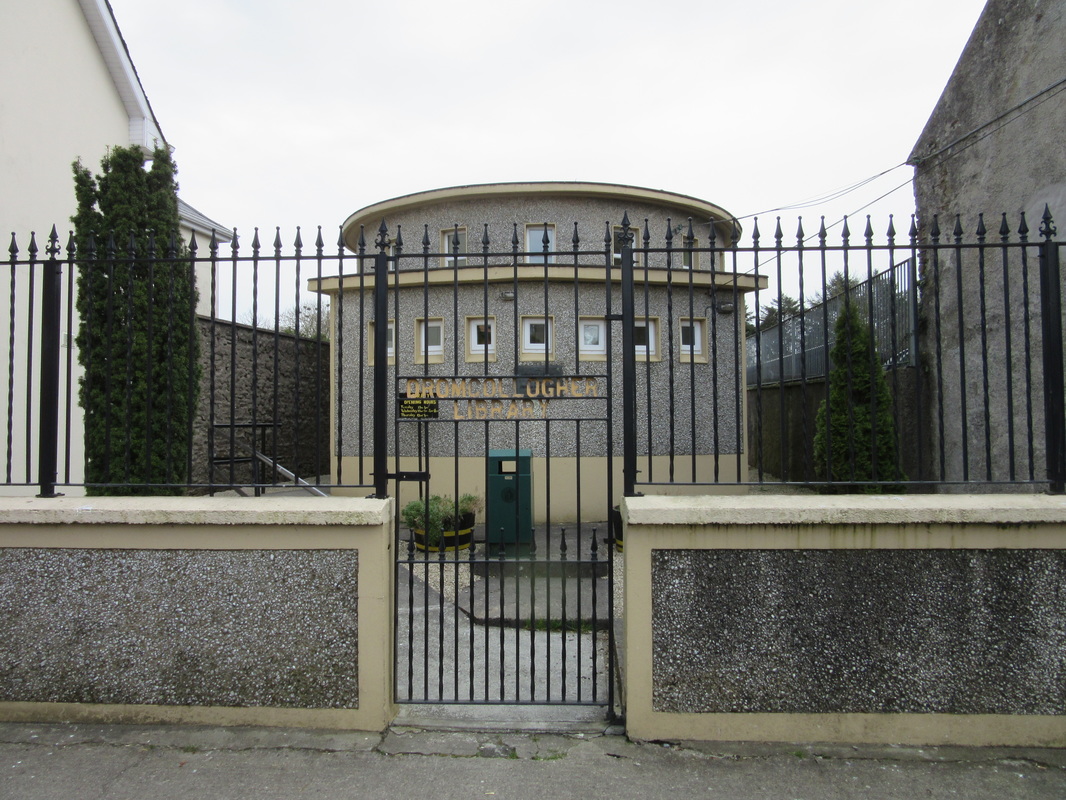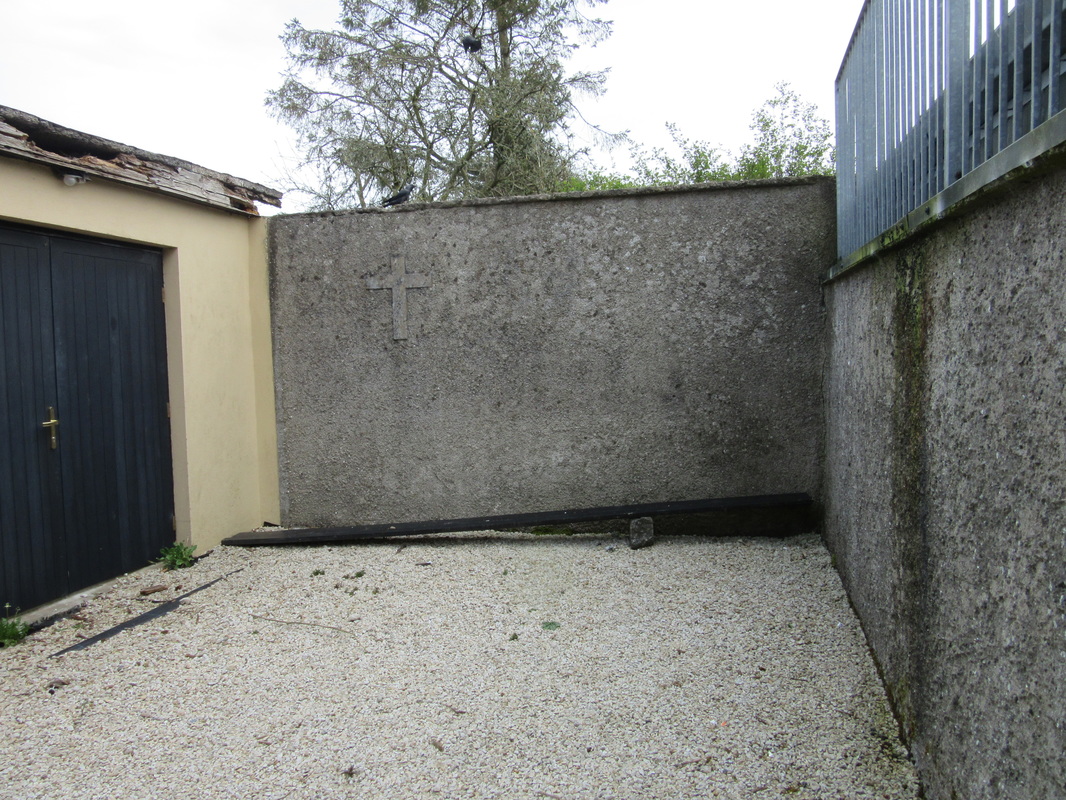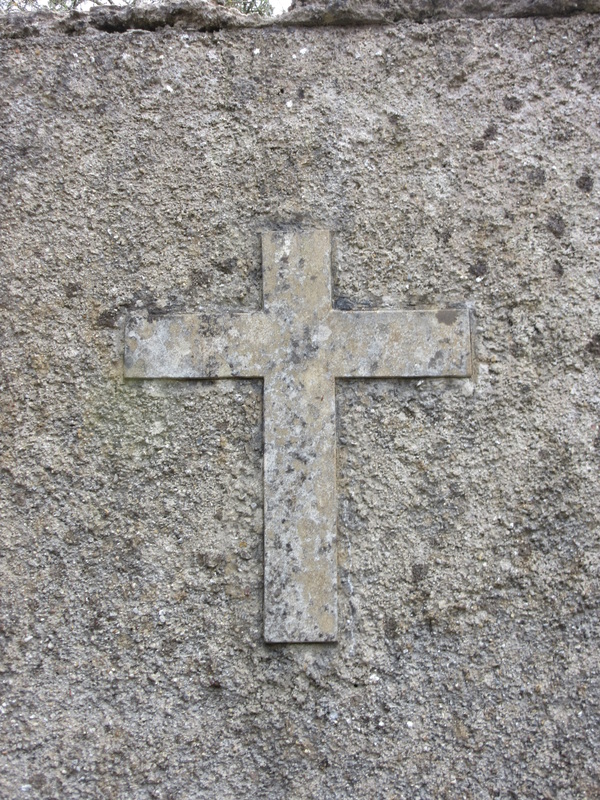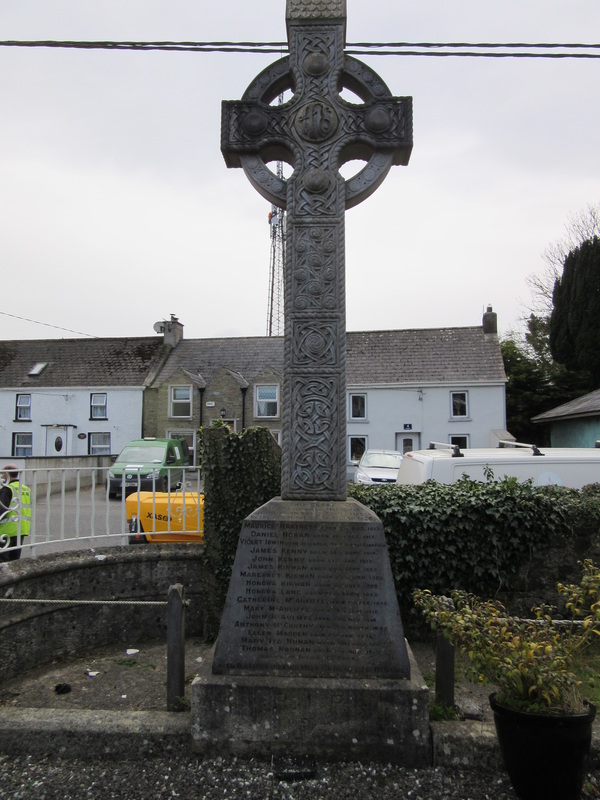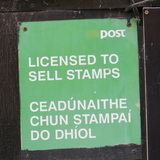| Today’s blog is proof positive that knowledge, even assumed, is merely connecting the dots of information. Dot 1 was inspired by curiosity. On one of my regular trips to Dunmanway, I spotted this unusual tiled band on a detached house on the Relief Road. The house was situated where one might expect a lodge but appeared to be a bit more grand than most lodges. Dot 2 was provided by the internet some weeks later when I went looking at mRNA and RECO and some more abbreviations/words on the tiles. I was quickly overloaded with matters well beyond my scientific knowledge. I then knew that the tiled band related to DNA but was really no nearer why it was on someone’s house. Dots 3 and 4 fell instep almost together. I read of the West Cork Education Centre project, ’What is Life’, which was in conjunction with Prof John Atkins of U.C.C. Atkins is a name on a few buildings in Dunmanway. A question of a local confirmed that the lands upon which this ‘lodge’ sits are of the Atkins family. I now suppose that Prof Atkins, or a relation, is responsible for the writing of the wall – the detail on the façade of the building. I think I have solved my own question. I do like the tiles. |
|
0 Comments
I spotted this plaque recently on the gable wall of the former Infant School at Higher O’Connell Street in Kinsale.
The screw fixings do give the indication that it is probably not original to the building. Google streetview confirms that it was in place in 2011. I am lost as to its meaning. I have not seen anything like it before, or since. Any ideas. It may not be as important or as news-worthy as Cormac Ó Bruic’s departure from The Flying Enterprise or Na Piarsaigh football team bein g instructed to speak English.
No doubt it is human error and an oversight but arguably it is discrimination nonetheless. English speakers can park in the Loading Bay on Woods Street on Saturdays and Sundays – they being outside the prohibited periods on Monday to Friday. Those communicating through Irish are prohibited on Saturday – Dé Sathrain. The frog was keeping an eye on me. I almost missed him completely. The Henley family headstone is in St. Finbarr’s Cemetery. I liked the shape and detail and was taking some photographs. Only then did I spot the frog.
I think that this is a great detail. Not only will I now remember the Henley family, but I will remember with a smile. Respect too to Wallis Monumental Sculptors in Midleton. Take a while to appreciate the carving on a headstone at St. John’s Cemetery, Glantane (near Mallow). My trail in search of the work of Seamus Murphy continues – a very successful week was had. This morning, I had a very enjoyable hour at Church of the Annunciation in Blackpool where there was an exhibition on the work of SM as part of Culture Night. Saturday afternoon was spent in St Finbarr’s Cemetery. A meeting in Dunmanway of Tuesday allowed me to take time out and travel on to Drimoleague, Castlehaven, Myross and Clonakilty to admire and record. The carving above was taken on my last trip to the Dingle Peninsula this summer when yet another detour was taken. I spotted the headstone immediately as I entered the cemetery. The shape, stone, thickness and colour of engraving make the work of SM distinctive, and helpful to spot. I was immediately taken with the carving. I was appreciating it so much that it was a small while before I read (and translated) the inscription. Then, I was even more impressed with the carving and its appropriateness to remember and commemorate a young life – a life of only eight years. Feargal Ó Tuama - ag smaoineamh ort.
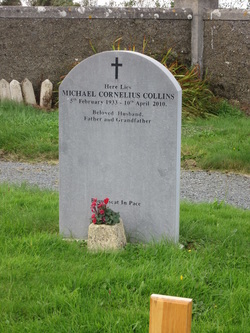 Castlehaven, Skibbereen Castlehaven, Skibbereen Con, Connie, Cornelia and Neilus – I have met at least one person with each these names on my journeys about this planet. I do not think that I have ever met a ‘Cornelious’ but some of those who I addressed as ‘Cornelius’ may have been silently offended at my assumption as to the spelling of their name. When I spotted this headstone at Abbeystrowry Cemetery earlier, my first thought was that it was an unusual spelling – one that I had not seen previously. My crossword brain then kicked in thinking that words ending in ‘ious’ are generally adjectives – devious, previous, conscious… Reading down the headstone, it appears that ‘Cornelious’ was a popular name in a branch of the McCarthy clan. There are many names that demand clarification as to spelling when first introduced to the nameholder – Ahern/Aherne; Mahony/ O’Mahony/ O’Mahoney (generally leads to a soup discussion); and, Isobel/Isabel/Isabelle. Cornelius/ Cornelious has now been added to that list. 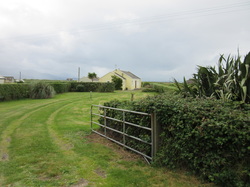 I very much like the idea of bringing metal or even street furniture into the garden as a feature. I still hope for a phone box – and a letter box. I was jealous of JV’s Cannon Bath. I do have a hopper, a yellow fire hydrant ‘H’ sign and recently got the top of an old bus stop when CIE were installing the new design bus stops. I think that they improve the garden – not everyone agrees but they definitely provide a discussion topic. The most recent acquisition is a church pew – an adequately sized location is the current hurdle. When in Kerry during the summer, my envy increased a few levels when I spotted what I assume to be a railway line marker. The Inchicore Works from 1899 for the Great Southern & Western Railway – absolutely lovely and guaranteed to start a discussion. An absolute beauty – in the eyes of this beholder. The annual Irish Times list of most common children’s names tends not to change much – but below the top twenty, I suspect that there are a few names plummeting or even disappearing.
I do not think I know of someone called Gobnait, Concepta, or Attracta (shortened to Tracta) who is under the age of fifty. I have a recollection of there being very many by the names of Mary, Finbarr, Noreen and Margaret when growing up – but I do not think that I have heard anyone in school with or playing with our ten year old by any of those names. Even extending the search to friends of neighbours, nephews and nieces does not hit a match with those names. Even Patrick and Michael are 16th and 8th on the Irish Times list. They are definitely not as often encountered as they were when I was younger. Out of 120 pupils in my year, we could probably have had a full team made up of just Mike, Micheal, Padraig and all derivatives of Michael and Patrick – all children of the mid-sixties. Recently visiting St . Mary’s Cemetery at Fanlobbus in Dunmanway, I spotted this headstone to Goodhand Clarke. My first thought was that it was a name more likely to be heard on The Little House on the Prairie or in a film about the Amish community – not one in West Cork. I do like the name – both the sound and the message. I am not sure our society is creating very many Goodhand’s.
|
AuthorFrom Cork. SUBSCRIBE
Unless otherwise specifically stated, all photographs and text are the property of www.readingthesigns.weebly.com - such work is licenced under a Creative Commons Attribution - ShareAlike 4.0 International Licence
Archives
May 2024
Categories
All
Blogs I Read & LinksThought & Comment
Head Rambles For the Fainthearted Bock The Robber Póló Rogha Gabriel Patrick Comerford Sentence First Felicity Hayes-McCoy 140 characters is usually enough Johnny Fallon Sunny Spells That’s How The Light Gets In See That Tea and a Peach Buildings & Things Past Built Dublin Come Here To Me Holy Well vox hiberionacum Pilgrimage in Medieval Ireland Liminal Entwinings 53degrees Ciara Meehan The Irish Aesthete Líníocht Ireland in History Day By Day Archiseek Buildings of Ireland Irish War Memorials ReYndr Abandoned Ireland The Standing Stone Time Travel Ireland Stair na hÉireann Myles Dungan Archaeouplands Wide & Convenient Streets The Irish Story Enda O’Flaherty Cork Archive Magazine Our City, Our Town West Cork History Cork’s War of Independence Cork Historical Records Rebel Cork’s Fighting Story 40 Shades of Life in Cork Roaringwater Journal |
